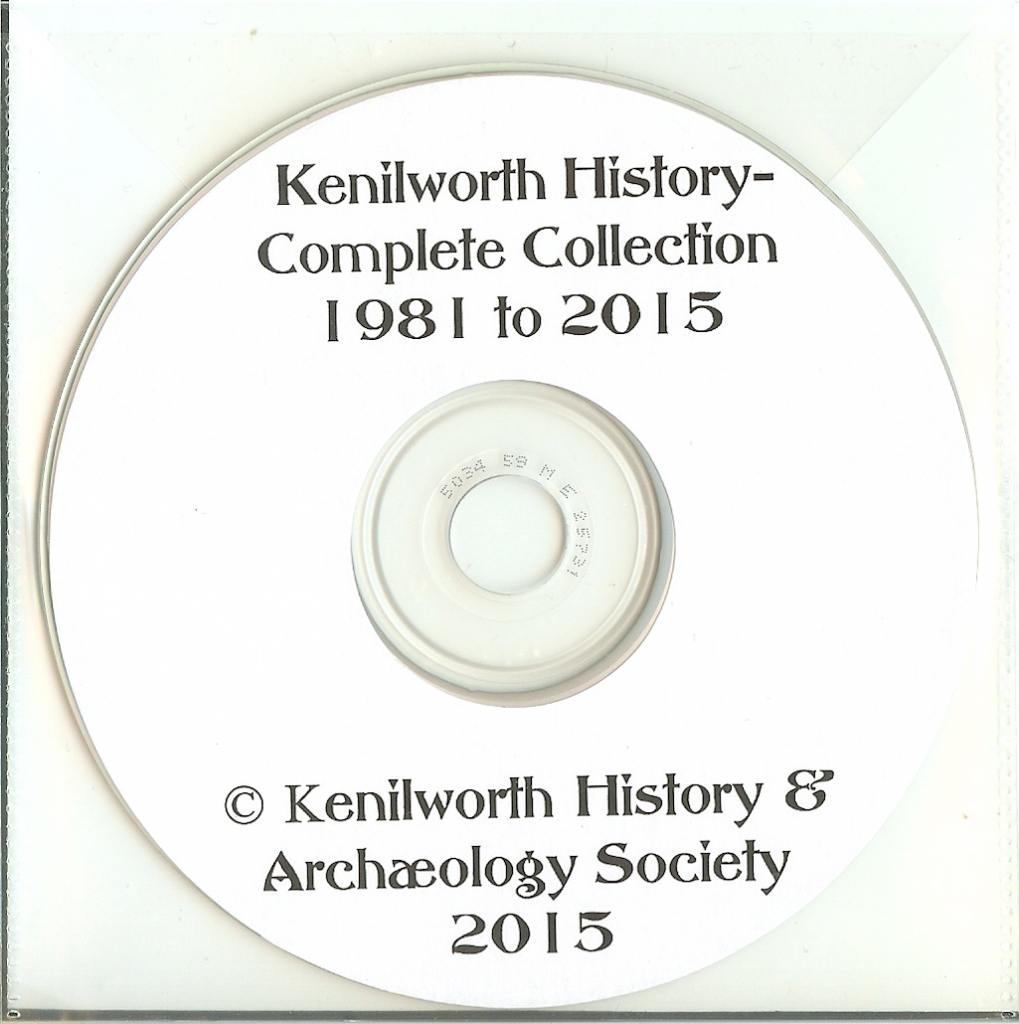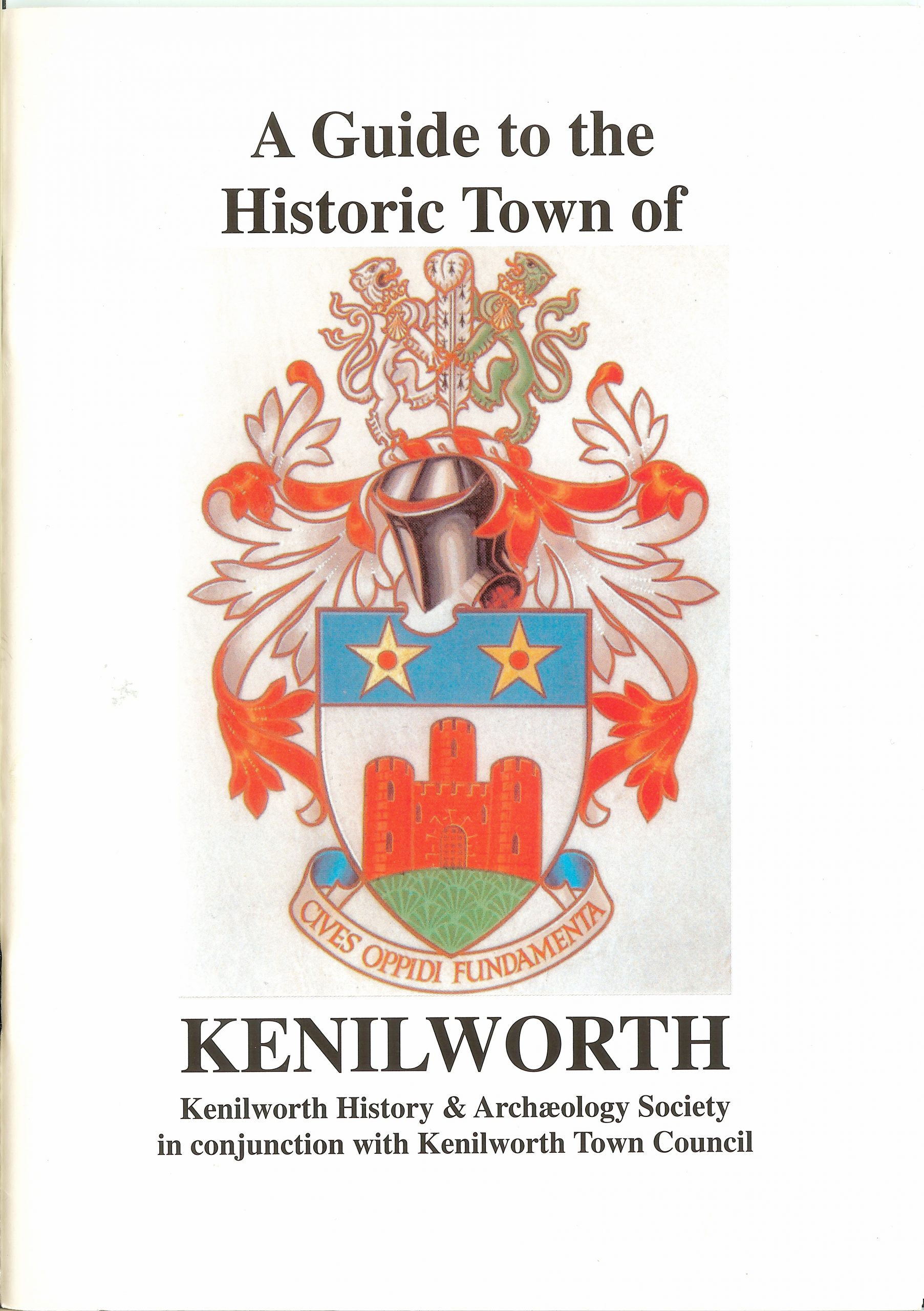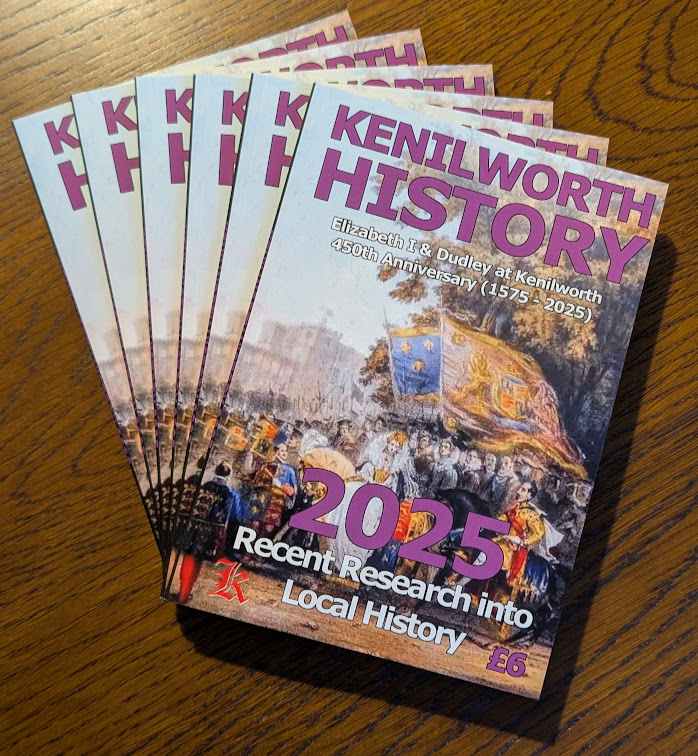Kenilworth History 2025
The latest KHAS annual booklet Kenilworth History 2025: Recent Research into Local History is now on sale, priced £6 or free to members.
As ever, Kenilworth History 2025 is available for purchase from Kenilworth Books in Talisman Square. It is also available from the Abbey Museum & Heritage Centre.
The articles in this year’s edition cover a broad continuum of Kenilworth’s long history:-
We start with an article by George Evans-Hulme on the then-Kenilworth mayor Alix Dearing’s visit to our own Abbey Museum & Heritage Centre, showcasing how visitors are constantly surprised and delighted to find what a little hidden gem it is.
Following that, two articles from the widely-published local historian Robin Leach. who continues his quest to document the back-stories behind the newly-assigned street-names for the roads that comprise the various new developments around the town. This quest was originally started by Geoff Hilton in his first two editions of A Portrait of Kenilworth in Street Names, from whom Robin nobly took up the mantle with a third edition and he now continues that work for us here.
Next, we have a passionate appeal from Brian Robins, who is determined to publicise the work of transport pioneer, skilled art metalworker, whitesmith and engineer named Edward Langley Fardon. How many people know that he developed the first ever bicycle with spoked wheels in suspension and rubber tyres here in Kenilworth and its inaugural ride was from here to Leek Wootton? Brian is, quite rightly, trying to shine a light on Fardon’s achievements. Can anyone help?
Then Jan Cooper shows us the extraordinary discovery of some mediaeval stone trebuchet balls, which were unearthed during English Heritage’s recent works to build accessible pathways in and around Kenilworth Castle in 2024.
Following that, Garry Ravenhall writes for us about Elsie June Ravenhall (née Stickley) and her bravery in sheltering a Jewish man from the Gestapo in WWII, for which she quite rightly received awards for her valour. Her story should be more widely known than it is, so we thank Garry for telling it here.
Then there is an article from Chris Blunt on the bizarre superstition of apotropaic marks carved on stonework, made by mediaeval people to keep evil out of buildings. There are numerous such examples, and possible candidates for examples, around Kenilworth, upon religious and secular buildings. If readers are aware of more such examples, then we’d be delighted to hear about them for next year’s edition.
After that, Ormond Simpson has written us an article on St Nicholas’ vicar William Maddock, and his role in the ‘The Great Ejection’ of 1662; an episode that may be new to many of us and which thoroughly deserves its place in these pages.
Next, Nick Green provides us an unexpected answer to the puzzle of the mystery stone object, which was passed round at the Christmas 2024 meeting.
After that, Chris Blunt engages in some armchair archaeology, pondering a lost settlement called Luzley, which may once have stood within modern Kenilworth’s boundaries.
Then David Brock provides a valuable update on the recently unearthed Kenilworth Priory / Abbey Register. This extraordinary document has the potential to tell us much about our once powerful abbey’s extensive land holdings across the country. However, as it is an anciently ink-scribed manuscript of monastic Latin, complete with mysterious abbreviations and archaic spellings, it’s almost impenetrable for the casual reader. Thankfully, David has been doing the hard work on it, so that you and I don’t have to! We wish him well in this ongoing quest.
Lastly, on a related topic, Chris Blunt lists the examples of monastic wax seals used by Kenilworth Priory / Abbey, which were catalogued by the Public Record Office amongst their collections. While the seals are nice to see in their own right, they are perhaps of more interest because of the documents that they appear upon, which may in turn give us more documentary sources to chase?
We hope you enjoy Kenilworth History 2025 as much as we enjoyed producing it.
Kenilworth History on CD – 1981 to 2015
A CD containing every issue of Kenilworth History from 1981 to 2015 (inclusive) is now available. It has on it also a file of all the ‘Tables of Content’, six spreadsheets of those contents sorted by date, author, title, and three subject categories, and one continuous file of all the KHs so that it can subjected to a wordsearch from beginning to end – a really valuable resource for any researcher. The Society is charging £5 a CD, which, if you consider that people in the Town bought over 60 copies of KH2015 alone for £5 from the Bookshop, is incredibly good value for money:

The Siege of Kenilworth – 750th Anniversary Programme
The Siege of Kenilworth – 750th Anniversary Programme is still available from various sources, including Kenilworth Books in Talisman Square:

A Guide to the Historic Town of Kenilworth
Some years ago the Society produced a guidebook covering the historic sites of Kenilworth, which is still available from various sources, including Kenilworth Books in Talisman Square:

Other Pamphlets
A number of pamphlets are available at a nominal fee, as well as books at a discounted rate, at KHAS meetings – see the KHAS programme page for details of where and when these take place.

